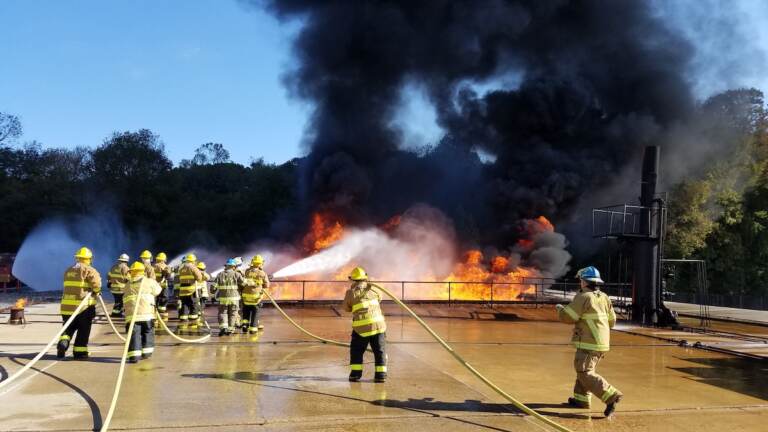Delaware lawmakers want accounting of PFAS-containing foam at fire stations statewide
A resolution approved in the Delaware House aims to start the process of replacing the toxic foam with an unnamed alternative.

Firefighters contain a blaze as part of a Delaware State Fire School exercise. (State of Delaware)
Delaware lawmakers are exploring options to help volunteer fire companies in the state get rid of firefighting foam that contain toxic “forever chemicals” known as PFAS.
A resolution approved in the state House earlier this month calls for counting the number of canisters stored at fire stations statewide, as the start of a process of replacing the foam.
“It charges the Delaware State Fire School with the inventory of all this product within all stations in the state. Once that inventory is determined, then they will determine how they can dispose of it,” said State Rep. Daniel Short.
While the foam is effective at extinguishing fire, the PFAS chemical it contains has caused serious health concerns in Delaware and around the country. Last year, the Centers for Disease Control and Prevention released a study that identified higher-than-average PFAS blood levels in residents near New Castle Air National Guard Base. That’s the result of water contamination related to the use of the aqueous film-forming foam during firefighter training on the base, the CDC report found. The foam entered the groundwater and flowed to other locations, affecting nearby municipal wells.
Similar contamination was identified in wells near Dover Air Force Base, and other military installations in the region including sites in Bucks and Montgomery counties in Pennsylvania, at Joint Base McGuire-Dix-Lakehurst in New Jersey.
Short’s resolution got unanimous support in a voice vote. The measure also calls for the State Fire School to develop a plan for eliminating the foam.
“Once the accounting is done for the amount that we have, we’ll determine how we can dispose it, and how much it will cost,” Short said. “Then they will also contract with a price to replace that foam on a one-for-one basis, on a one time event. They turn in 20 canisters, they get 20 canisters to keep them in business.”
Reliably replacing the substance could be a challenge though, as some groups have questioned the effectiveness of the PFAS free alternatives.
Lawmakers expect a report back on the cost of replacing the foam before the state budget is approved at the end of June.
WHYY is your source for fact-based, in-depth journalism and information. As a nonprofit organization, we rely on financial support from readers like you. Please give today.







